Lobsters are some truly strange creatures. Sure, we humans love to eat them, but they are basically large insects that live in the ocean! Today, we are going to learn a little about lobsters, specifically how many legs they have. After that, we’ll also look at a few facts about lobsters and their legs that many people may not know. Let’s get started and learn about lobsters!
How Many Legs Do Lobsters Have?

Lobsters have 10 legs, but different species have different leg layouts.
©davemhuntphotography/Shutterstock.com
Lobsters have ten legs, which are jointed appendages used for a variety of purposes, depending on the type of leg they are.
The first two pairs of legs have large claws used for grasping and crushing prey, while the remaining eight legs are used for walking and swimming. These eight legs are classified into two types: pereiopods and pleopods, although the claws at the end of certain species are known as “great chelipeds”. Pereiopods are walking legs, with the first pair being the largest and strongest. The remaining pairs are progressively smaller, with the last two pairs modified for swimming. Pleopods are located on the underside of the lobster’s body and are used for swimming and reproduction.
5 Interesting Facts About Lobster Legs
1. Not All Lobsters Have Claws
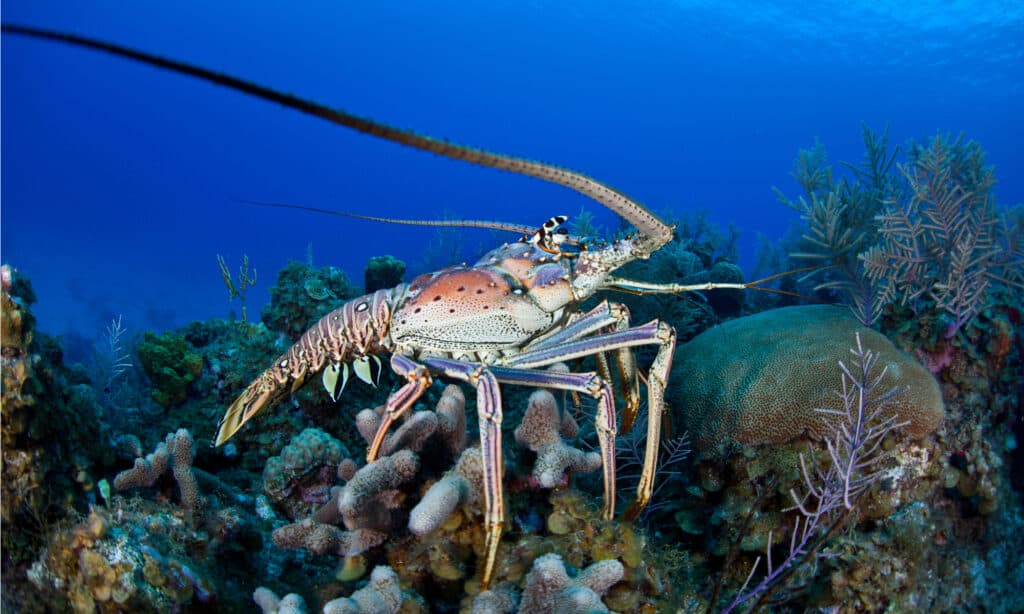
Spiny Lobsters don’t have claws like American lobsters.
©Ethan Daniels/Shutterstock.com
Not all lobsters have claws, which is contrary to popular belief in many regions of the world! There are two main types of lobsters: clawed and spiny. Clawed lobsters, such as the American lobster and the European lobster, have two large claws, while spiny lobsters, such as the Caribbean lobster and the slipper lobster, have no claws but long spiny antennae. Female lobsters have smaller claws than males, and some lobsters may lose a claw in battle but can regenerate it over time.
2. Lobsters Have a Specialized Crusher Claw and Pincer Claw
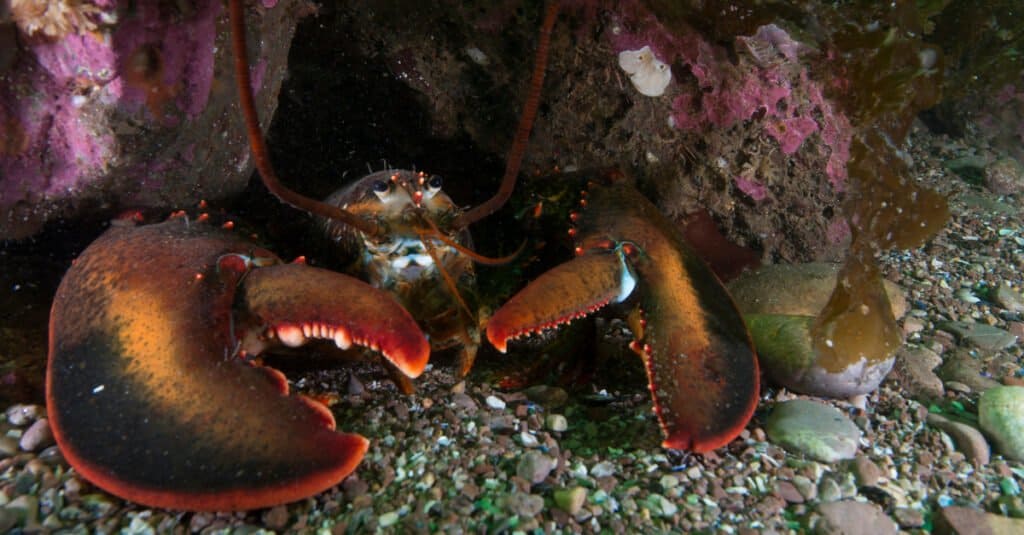
American and European lobsters have a crushing and a pinching claw.
©RLS Photo/Shutterstock.com
The huge claws on certain species of lobster aren’t just for show; they are actually useful! Lobsters use their claws for different purposes, depending on their size and shape. The larger crusher claw is used to break up hard food, such as clams and crabs, with its ridged edge. The smaller pincher or ripper claw is used to tear apart softer prey like worms or fish. The claws can be on different sides of a lobster’s body, and lobsters can be right or left-handed depending on which side the crusher and pincher claws are located. If you ever go to shake a lobster’s hand, you can see which one is their dominant one by which one has the largest claw!
3. Lobsters Can Smell and Taste With Some of Their Legs
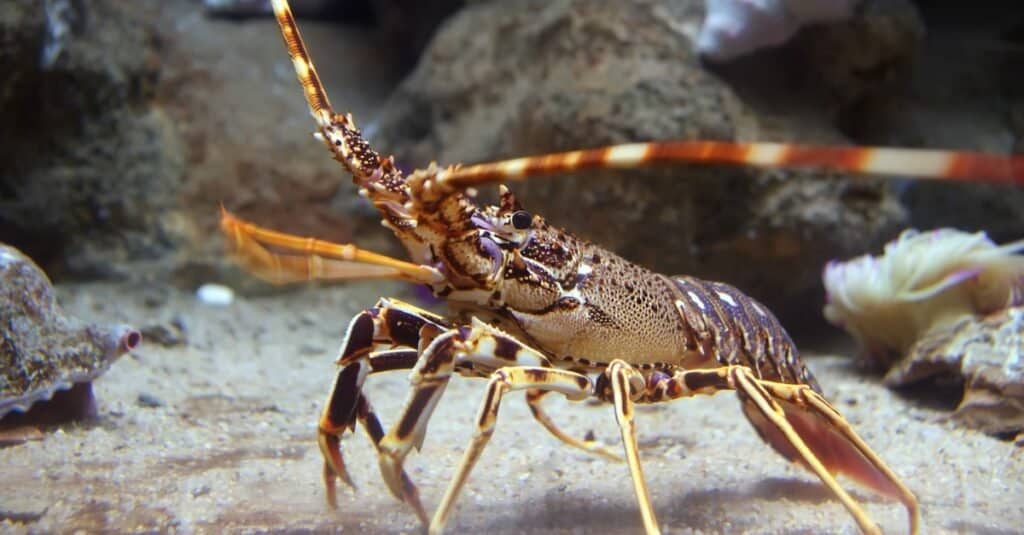
Lobsters can smell and taste with their legs.
©VLADJ55/Shutterstock.com
Lobsters have a unique way of identifying and locating their food using their sense of smell and taste. Instead of a nose and mouth like a human, they use small chemosensory hairs located on their legs and feet to detect food. These hairs are useful for finding prey, especially for small creatures or food that is dissolved in the water. The antennae on the front of their heads are used to smell food that is further away. These adaptations make their sense of smell so precise that they can detect a single amino acid just by smelling it. Additionally, the hairs on their front walking legs allow them to taste the food when consuming their prey.
4. Lobsters Have Special Legs to Help With Swimming
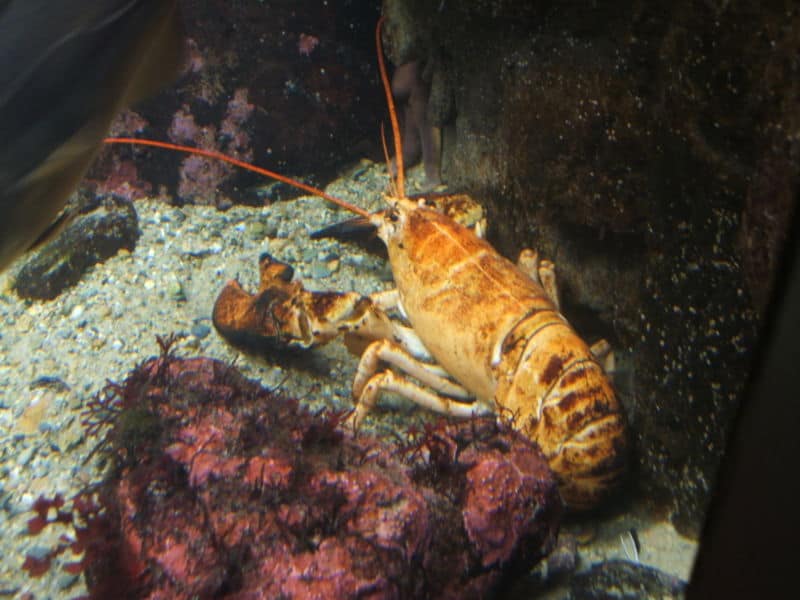
Lobsters can swim through a combination of their legs and tail.
©Steven G. Johnson, CC BY-SA 3.0, via Wikimedia Commons – License
Lobsters have special legs called pleopods that are often called “swimmerets”. These legs are located on the underside of their bodies and have tiny hairs that help with swimming and maneuvering in the water with a bit more precision. While lobsters primarily move using their tails, the pleopods are important for swimming at slower speeds and precise movements. When combined with their extremely strong tails, lobsters can navigate in the water incredibly fast. In females, these hairs on the swimmerets are longer and act as an attachment point for their eggs during the mating season. Certain species of female lobsters (found in New Zealand and Australia) also have a specialized “grooming leg” that they use to comb the eggs that attach to the swimmerets after mating.
5. Lobster Legs Are Considered a Delicacy!
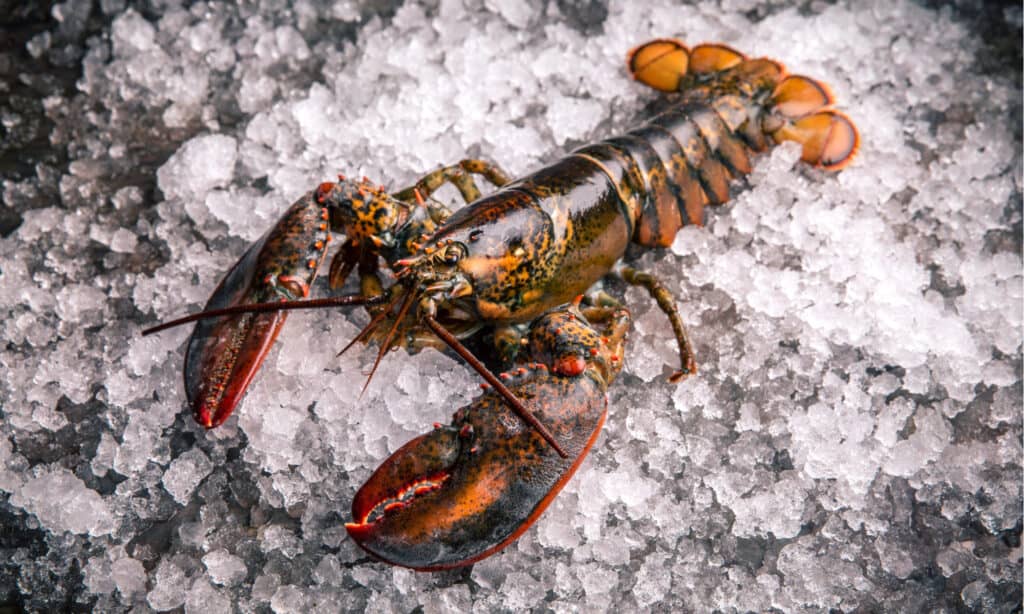
Lobsters are eaten all over the world and considered a delicacy.
©MaryLucky/Shutterstock.com
Lobsters are a popular food item around the world, and humans have been catching and eating them for a very long time. When it comes to cooking and eating lobsters, their claws are particularly prized, along with their powerful tails. The meat from the claws is considered more tender and delicate than the firmer meat from the tail. When you’re eating a lobster claw, you are eating a leg!
The photo featured at the top of this post is © Arunee Rodloy/Shutterstock.com
Thank you for reading! Have some feedback for us? Contact the AZ Animals editorial team.






